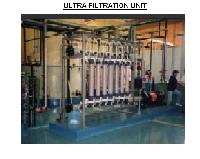
Water Treatment Equipment (wte - 03)
We are offering Water Treatment Equipment (Ultra Filtration).
...more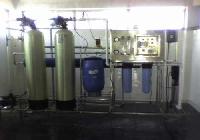
Water Treatment Equipment (wte - 02)
We are offering Water Treatment Equipment (wte - 02).

Water Treatment Equipment (wte - 01)
We are offering water treatment equipment.
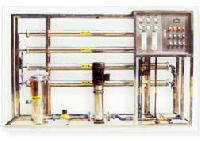
Water Purification Plant
Reverse osmosis system / r. O. Plant reverse osmosis has emerged as a serious alternative to chemical treatment systems due to a number of reasons. The minimal use of chemicals makes it environmentally desirable. Reverse osmosis is a simple process and the operational and maintenance costs are lower. They can be found in system servicing restaurants, car washes, bottled water & beverage plant, hotel/motel drinking water installations, greenhouses, ice manufacturing plants and medical & scientific laboratories, electronics and pharmaceuticals industries and boiler & cooling water application.
...more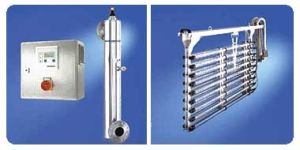
Uv Disinfection System
Ultraviolet rays destroys micro-organisms ultraviolet sterilization works by dissociating the dna structure of living cells thus preventing their multiplication. To destroy molecular chains requires a uv dose dependent on the organism type and at the germicidal wavelength of 253.7 nm. Uv light between 200 and 280 nm is called short wave uv light or more commonly uvc and has germicidal properties. the uv disinfection unit comprises an enclosed chamber with an inner sleeve of high purity quartz which contains one or more short wave ultraviolet lamp/s. Water passes through the chamber and is subjected to the uvc which shines through the quartz sleeve. As the genetic structure of bacteria or viruses in the water are exposed to the uvc it will be destroyed. ultraviolet disinfection offers several benefits it is economical – significantly lower capital and, operating and maintenance costs than other disinfection methods. uv does not create toxic substances as do traditional chlorine or newer ozone treatments, nor does it alter the taste or physic-chemical properties of the water. it is a safe and reliable method as nothing is added to the water and it is impossible to overdose uv. uv is highly effective against viruses unlike most chemicals. No organisms known are immune to uvc light, though doses vary. Delta ion uv systems – the complete supplier offers value added benefits. choosing delta ion uv systems as your complete uv treatment supplier will ensure a number of added benefits: low-pressure lamps are most efficient at converting electrical energy into disinfection wavelengths, as the output is centered at 253.7 nm and they offer the longest lamp life (minimum 8000 hours). Low-pressure lamps also mean lower temperatures than other uv lamps and they do not accelerate internal fouling of optical surfaces. multi-lamp units arranged in compact single chambers, offer better light distribution and greater reliability (should a lamp fail, remaining lamps continue to provide uv protection – no need for duty/standby units). Automatic self-cleaning systems allow uv to be used in ‘dirty’ waters. Iron- and peat loaded supplies, sewage and trade effluents can all be successfully uv treated with minimal maintenance. over the years delta ion uv systems has developed an in-depth understanding for a vast field of applications and problems. This diverse expertise resulted in high creativity and customized solutions. as a specialist manufacturer delta ion uses sophisticated design software that optimizes the individual uv chamber design to the precise flow, clarity and dose needs, minimizing total costs. a detailed customer questionnaire is sent to every customer and all necessary parameters are considered before designing and producing the uv equipment.
...more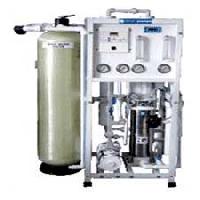
Ultra pure Water System
Delta ion has taken every step to ensure patient safety. Each new dialysis facility is designed to deliver “ultra pure” water. during each dialysis treatment, the patient’s blood is cleaned across an artificial kidney membrane with a cleansing solution (dialysate) made from purified water. Current standards in the united states recommend that the water not contain more than 200 colony forming units of bacteria per milliliter (ml) of water and less than 2 endotoxin units per ml of water. we believe that lowering the amount of bacteria and endotoxin in the water will benefit our patients and we have therefore chosen to use "ultra pure" water standards instead of conventional standards. these "ultra pure" standards have 1000 times less bacteria as compared to conventional standards. Available data would support that less bacteria and toxins results in a decrease of the chronic inflammation state often seen in dialysis patients. we hope this translates to improved nutritional status, less anemia, more clearance of b2 micro-globulin and possibly even less cardio-vascular complications. There are clear morbidity and mortality benefits with improving nutrition and anemia. By clearing more b2 micro-globulin; carpal tunnel syndrome and arthopathies become less significant and improve patient quality of life. with respect to the lower cardio-vascular complications, the hypothesis is- less chronic inflammation from less bacteria and toxins will cause less vascular disease. This would result in fewer heart attacks, less strokes and less painful peripheral vascular diseases. we always have been, and will continue to be, dedicated to patient care and now “ultra pure” water is another way for us to better the standard of care.
...more
Sachet Packing Machine
We are offering Sachet Packing Machine.

Reverse Osmosis Plant
In ro, feed water is pumped at high pressure through permeable membranes, separating salts from the water. Feed water is pre-treated to remove particles that would clog the membranes. The quality of the water produced depends on the pressure, the concentration of salts in the feed water and the salt permeation constant of the membranes. Product water quality can be improved by adding a second pass (module) of membranes, whereby product water from the first pass (module) is fed to the second pass (module).
...more
Pet Stretch Blow Moulding Machines
We are offering Pet Stretch Blow Moulding Machines.
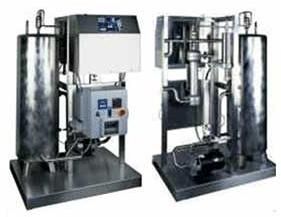
Ozone Water Treatment System
We offer ozone water treatment system.

Ozone Generators
Ozonation has been increasing everywhere through out the world, particularly over the last decade as the negative effects of chlorination have become more apparent. For example, a modern water treatment plant in the usa has been built by the city of los angeles to use ozone for primary disinfection and micro flocculation of as much as 600 million gallons of water per day. an east texas power utility will be the first small water utility service in texas to use ozone water treatment technology for drinking water purification. In the field of creative ozone water treatment, delta ion designs, manufactures, and installs the finest ozone generator systems produced today. Each component interfaces harmoniously with the others to achieve the most cost effective and optimum performance. These process trains are installed around the world in a variety of industries. The solutions we offer are nowhere else available in the world. the major component of our ozone water treatment system is the ozonator, which is built to our specifications. The ozone generator is assembled from high quality material, solid state electronics, and mechanical parts manufactured with consistently close tolerances, creating a uniquely high quality end product. Delta ion ozone generators are assembled with a system approach that offers a very reliable ozone generator product. The high oxidation potential of ozone is utilized to its greatest advantage with ozone generator equipment. Efficient injectors, static mixers, and a reaction and filter vessel sized for the application make the delta ion ozone generator process a very successful treatment option. Ozone generators at delta ion are made of high quality materials and ozone generators are effective in air and water treatment usages. The ozone generator completely breaks down odors and other pollutants at the source through our ozone generator systems. Delta ion is the leader in ozone generator technology and strives to provide quality and efficient ozone generator products. technical features general modular system features, monitoring of functions and operations according to din 19627 highest operational safety due to the use of serial components of leading manufacturers construction and materials designed for highest reliability and long life span complete ozone generator unit accommodated in one enclosure easy access to critical components proven industrial standard ease of operation low space requirement ozone module made of stainless steel ss - 316, ptfe and quartz glass cooling water side pressure-proof up to 10 bar gas side pressure proof up to 3 bar thermal isolated cooling water jacket against formation of condensate water high-tension transformer resin-embedded high-tension transformer(s) protected against condensate water air drying unit integrated in ozone generator unit dew point – 70°c automatic ozone production control serial equipped with automatic ozone production control (vs. Signal 4…20ma from external measuring device) serial frequency converter from a leading european manufacturer pi-controller included no moving parts electrical control siemens plc text display for indication of operating status maintenance easy maintenance low cost spare parts
...more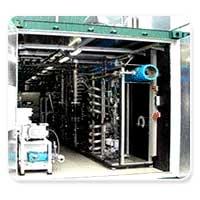
Mobile Container Water Purification System
We offer mobile container water purification system.

Mineral Water
Mineral Water System / Bottled Water Plant "Membrane Technology" incorporating ozone technology based Disinfection system is a technology that offers the opportunity to provide you and your family a high quality, hygienically pure and abundant supply of fresh and clear water. REVERSE OSMOSIS most commonly refers this technology as “DESALINATION”. This is a process in which water is forced through the semi permeable membrane having a pore size of 0.0001 micron which rejects almost all undissolved impurities like dirt, dust, bacteria, viruses and also the dissolved impurities like chloride, fluoride, lead, pesticides, sodium chloride and various other dissolved ions that lead to a bad taste, color and odor and then add dosing permissible minerals to treated water to make a tasty, pure and clean product water for Drinking Purpose. This product Water/Mineral Water is packed in various ranges in biodegradable PET Bottles and Jars.
...more
Fluoride Removal Filter
Activated alumina and reverse osmosis are the only two methods for removing fluoride. Some companies claim that carbon filters will remove fluoride, but this is not correct. Also, all our Fluoride Systems use dual stage filters with activated alumina in the first stage and KDF/GAC in the second. We use the KDF/GAC cartridge to remove any activated alumina that may get into your water. Beware of companies selling a single stage filter with just activated alumina. This setup doesn't protect against activated alumina in your water.
...more
Desalination Plant
Desalination -A Promise for the Future As per a projection, by 2025 there will be severe water shortage in over 50 countries, affecting 2.8 billion people - 35% of world’s projected population. Desalination is a process that removes dissolved minerals (including but not limited to salt) from sea water, brackish water, or treated wastewater. A number of technologies have been developed for desalination, including reverse osmosis (RO), distillation, electro-dialysis and vacuum freezing. Two of these technologies; RO and distillation are being considered for their economical viability by municipalities, water districts, and private companies for development of sea water desalination. These methods are described below. Reverse Osmosis (RO) In RO, feed water is pumped at high pressure through permeable membranes, separating salts from the water (Figure 1). Feed water is pre-treated to remove particles that would clog the membranes. The quality of the water produced depends on the pressure, the concentration of salts in the feed water and the salt permeation constant of the membranes. Product water quality can be improved by adding a second pass (Module) of membranes, whereby product water from the first pass (Module) is fed to the second pass (Module). Distillation In the distillation process, feed water is heated and then evaporated to separate out dissolved minerals. The most common methods of distillation include Multi-Stage Flash (MSF), Multiple Effect Distillation (MED), and Vapor Compression (VC). In MSF, the feed water is heated and the pressure is lowered, so the water "flashes" into steam. This process constitutes one stage of a number of stages in series, each of which is at a lower pressure. In MED, the feed water passes through a number of evaporators in series. Vapor from one series is subsequently used to evaporate water in the next series. The VC process involves evaporating the feed water, compressing the vapor, and then using the heated compressed vapor as a heat source to evaporate additional feed water. Some distillation plants are a hybrid of more than one desalination technologies. The waste product from these processes is a solution with high salt concentration. Input Water (Feed water) Desalination plants may use sea water (directly from the ocean through offshore intakes and pipelines or from wells located on the beach or sea floor), brackish ground water, or reclaimed water as feed water. Since brackish water has lower salt concentration, the cost of desalting brackish water is generally less than the cost of desalting sea water. Intake pipes for desalination plants should be located away from sewage treatment plant outfalls to prevent intake of discharged effluent. If sewage treatment discharges or other types of pollutants are included in the intake, however, the pre and post-treatment processes should remove the pollutants. Product Water Distillation plants produce high-quality product water that ranges from 1.0 to 50 ppm tds, while RO plants produce product water that ranges from 10 to 500 ppm tds. (The recommended California drinking water standard for maximum tds is 500 mg/L, which is equivalent to 500 ppm.) In desalination plants that produce water for domestic use, post-treatment processes are often employed to ensure that product water meets the health standards for drinking water as well as recommended aesthetic and anti-corrosive standards. Desalination product water may be used in its pure form (e.g., for make-up water in power plant boilers) or it may be mixed with less pure water and used for drinking water, irrigation, or other uses. The desalinated product water is usually more pure than drinking water standards, so when product water is intended for municipal use, it may be mixed with water that contains higher levels of total dissolved solids. Pure desalination water is highly acidic and is thus corrosive to pipes, so it has to be mixed with other sources of water that are piped onsite or else adjusted for pH, hardness, and alkalinity before being piped offsite. Product Water Recovery The product water recovery relative to input water flow is 15 to 50% for most sea water desalination plants. For every 100 gallons of sea water, 15 to 50 gallons of pure water would be produced along with brine water containing dissolved solids. A desalination plant's recovery varies, in part because the particulars of plant operations depend on site-specific conditions. In several locations in California, pilot projects are being proposed to test plant operations before full-scale projects are built. Pre-treatment Processes Pre-treatment processes are needed to remove substances that would interfere with the desalting process. Algae and bacteria can grow in both RO and distillation plants, so a biocide (usually less than 1 mg/L chlorine) is required to clean the system. Some RO membranes cannot tolerate chlorine, so dechlorination techniques are required. Ozone or ultraviolet light may also be used to remove marine organisms. If ozone is used, it must be removed with chemicals before reaching the membranes. An RO technology has been developed recently that does not require chemical pre-treatment. In RO plants, suspended solids and other particles in the feed water must be removed to reduce fouling of the membranes. Suspended solids are removed with coagulation and filtration. Metals in the feed water are rejected along with the salts by the membranes and are discharged in the brine. With normal concentrations for metals in seawater, the metals present in the brine discharge, though concentrated by the RO process, would not exceed discharge limits. Some distillation plants may also need to remove metals due to potential corrosion problems. Filter Backwashing, Membrane Cleaning and Storage, Scaling Prevention and Removal, and Pipeline Cleaning The filters for pre-treatment of feed water at RO plants must be cleaned every few days (backwashed) to clear accumulated sand and solids. The RO membranes must be cleaned approximately four times a year and must be replaced every three to five years. Alkaline cleaners are used to remove organic fouling, and acid cleaners are used to remove scale and other inorganic precipitates. All or a portion of RO plants must be shut down when the membranes are replaced. When RO plants are not used continuously, the RO membranes must be stored in a chemical Disinfection/preservation solution that must be disposed after use. Distillation plants can also be shut down for tube bundle replacement, which is analogous to membrane replacement. Desalination plant components must be cleaned to reduce scaling-a condition where salts deposit on plant surfaces, such as pipes, tubing or membranes. Scaling is caused by the high salt concentration of sea water and can result in reduced plant efficiency and corrosion of the pipes. In general, scaling increases as temperature increases; thus scaling is of greater concern for distillation plants, since RO plants require lower temperatures to operate. Scaling can be reduced by introducing additives to inhibit crystal growth, reducing temperature and/or salt concentrations, removing scale-forming constituents, or seeding to form particles. Once scales have formed, they can be removed with chemical or mechanical means. In addition to scaling, both RO and distillation plants’ intake and outfall structures and pipelines can become fouled with naturally occurring organisms or corroded. Structures and pipelines may be cleaned by mechanical means or by applying chemicals or heat. Feed water may also be de-aerated to reduce corrosion.
...more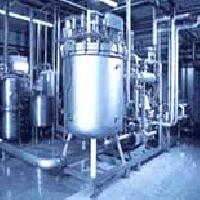
Clarifying Filtration
We are offering Clarifying Filtration.
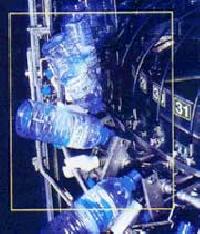
Bottle Packing Machine - (bpm 04)
We are offering bottle packing machine - (bpm 04) etc.

Bottle Packing Machine - (bpm 03)
We are offering bottle packing machine - (bpm 03) etc.

Bottle Packing Machine - (bpm - 02)
We are offering bottle packing machine - (bpm - 02) etc.
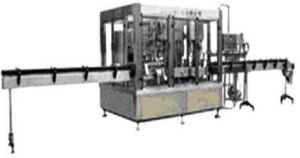
Bottle Packing Machine - (bpm 01)
We are offering bottle packing machine - (bpm 01)etc.

community drinking water plants

Mineral Water Plants

Reverse Osmosis Plants

Sewage Treatment Plants

Reverse Osmosis Systems
Be first to Rate
Rate ThisOpening Hours